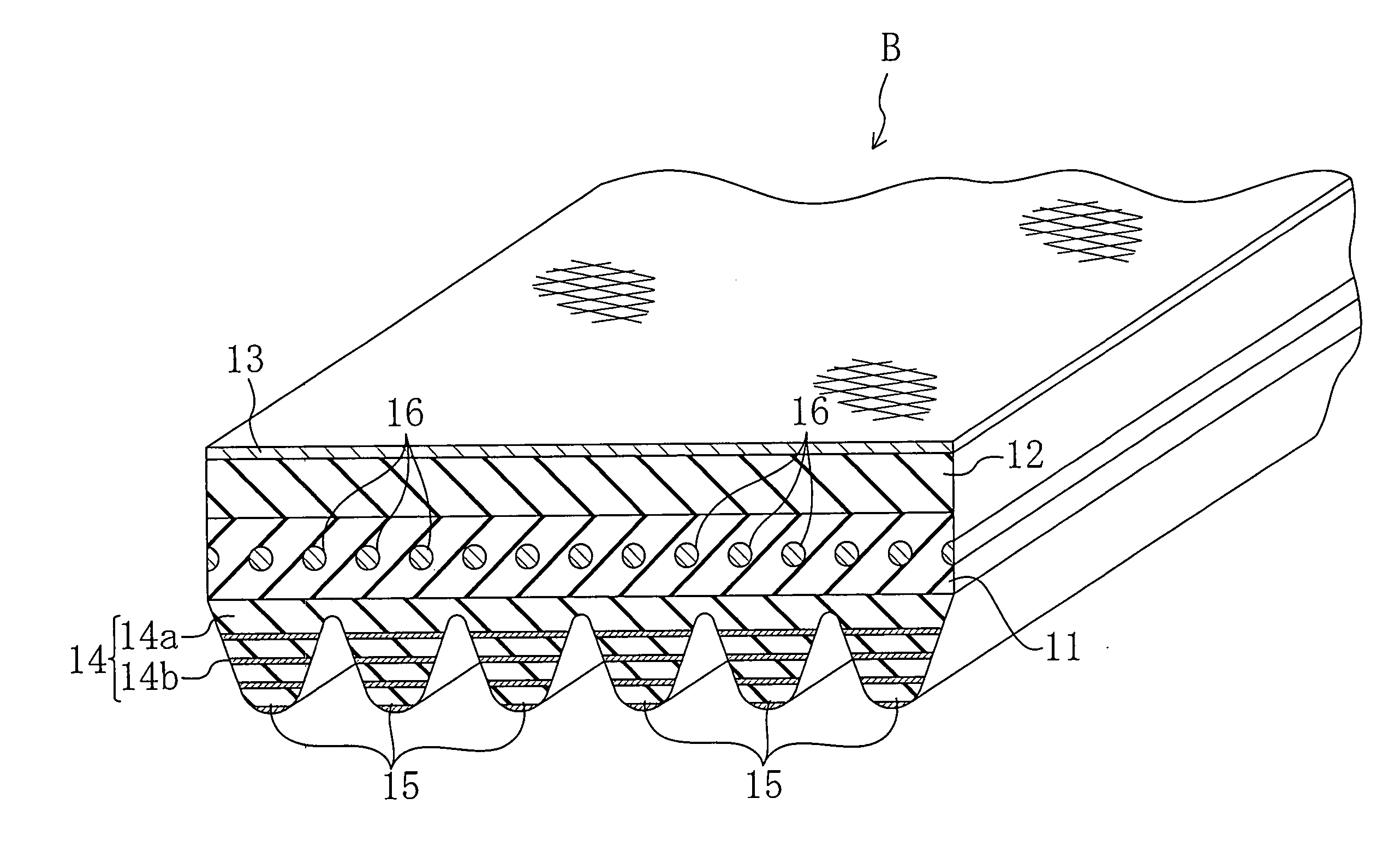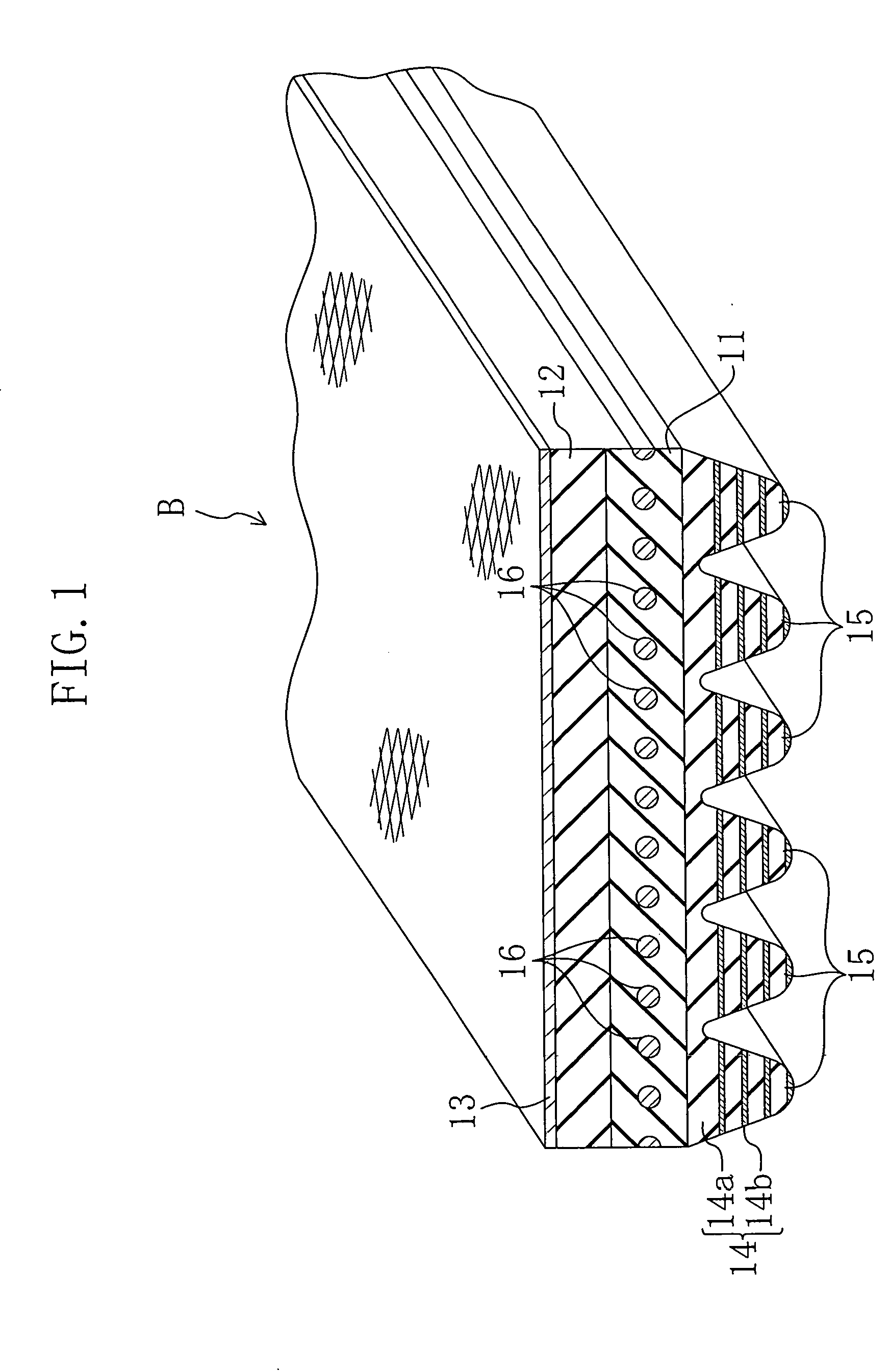Friction drive belt and method for fabricating the same
a belt and friction technology, applied in the field of friction drive belts, can solve the problems of reducing the friction resistance of the belt surface, and achieve the effects of reducing the coefficient of friction, reducing the flex resistance of the belt surface, and significantly increasing the abrasion at the belt surface during travel
- Summary
- Abstract
- Description
- Claims
- Application Information
AI Technical Summary
Benefits of technology
Problems solved by technology
Method used
Image
Examples
working examples
[0064] A description will be made of belt evaluations based on actually conducted tests.
(Belts for Test Evaluation)
[0065] V-ribbed belts for test evaluation were prepared as below. The belt structures are also shown in FIG. 13.
example 1
[0066] Prepared as Example 1 was a V-ribbed belt (rib height: 2.00 mm) which has the same structure as in the first-mentioned embodiment and in which a single non-woven fabric layer was formed using a non-woven nylon fiber fabric sheet of 0.05 mm thickness subjected to adhesion treatment with resorcinol-formaldehyde latex (RFL) liquid and rubber cement. Chloroprene rubber (CR) was used as the rubber component of a rubber composition constituting each of the adhesion rubber layer, the tension rubber layer and the rubber layer of the ribbed rubber layer. The back face reinforcing fabric was formed using a woven nylon fiber fabric subjected to adhesion treatment with rubber cement. The cord was formed using a twist yarn (Z-twisted) of polyethylene terephthalate (PET) fibers subjected to adhesion treatment with resorcinol-formaldehyde latex (RFL) liquid and rubber cement and stretch thermoforming process.
example 2
[0067] Prepared as Example 2 was a V-ribbed belt which has the same structure as in Example 1 except that three non-woven fabric layers were formed using non-woven nylon fiber fabric sheets of 0.05 mm thickness each.
PUM
| Property | Measurement | Unit |
|---|---|---|
| length | aaaaa | aaaaa |
| thickness | aaaaa | aaaaa |
| thickness | aaaaa | aaaaa |
Abstract
Description
Claims
Application Information
 Login to View More
Login to View More - R&D
- Intellectual Property
- Life Sciences
- Materials
- Tech Scout
- Unparalleled Data Quality
- Higher Quality Content
- 60% Fewer Hallucinations
Browse by: Latest US Patents, China's latest patents, Technical Efficacy Thesaurus, Application Domain, Technology Topic, Popular Technical Reports.
© 2025 PatSnap. All rights reserved.Legal|Privacy policy|Modern Slavery Act Transparency Statement|Sitemap|About US| Contact US: help@patsnap.com



